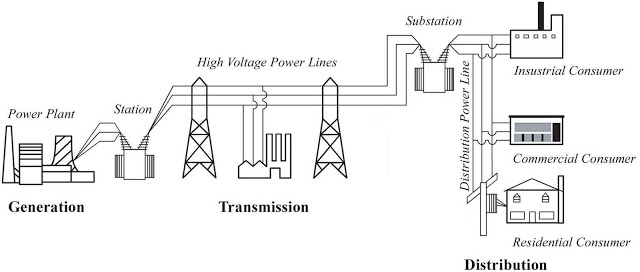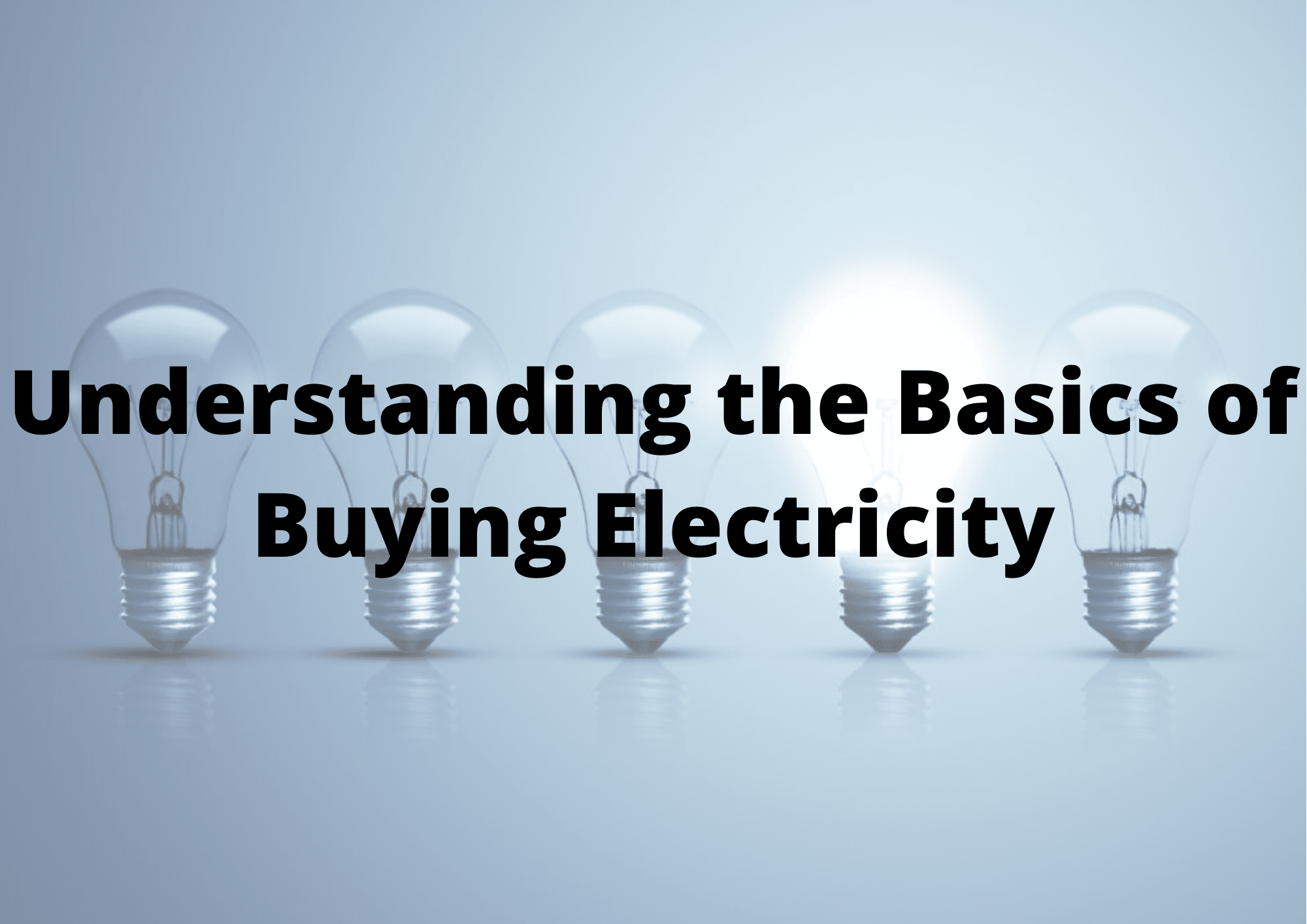Purchasing electricity for your business is an important decision. For most commercial customers, energy-related costs are a significant expense. By understanding the options available to you, you can select the best energy supply contract for your current and future energy needs. The proper choice can reduce your monthly bill right away and help you prepare for scalable growth in a proactive way.
Article at a Glance
- Energy costs are a significant expense for most commercial customers, making it essential to understand available options and choose the best energy supply contract for current and future needs.
- The Energy Supply Path consists of three steps: generating electricity from various sources, transmitting it through the grid, and delivering it to businesses.
- Choosing a low-cost energy supplier can significantly impact monthly bills as supply costs account for about half of fixed costs.
This post will introduce you to electricity—how it’s produced, sent, and delivered to your facility. You’ll also learn about the costs incurred at each step of the way.
As you consider each stage of the Energy Supply path, you’ll see how the costs on your monthly bill are determined so that you can evaluate your current energy management program. This information will empower you to make the best choices for your business energy needs and save you money.
The Energy Supply Path
The Energy Supply Path describes the three-step process of creating electricity: generating, sending it through the electric grid, and delivering it to your business to power your equipment.

Supply: Electricity is essentially the flow of electrical charge. It can be generated in several different ways when specific forces, including mechanical, magnetic, heat, or light, come into contact with any of several energy resources like sunlight, wind, water, natural gas, coal, oil, or nuclear. These power generators use various methods to convert potential energy into an electric current. This electrical current is the movement of charged particles that allow users to charge devices and power electronics.
In the United States, most electricity is generated using coal or natural gas (33% each), or nuclear power (19.5%). The remainder comes from hydropower, non-hydro renewables, oils, and other sources.
Supply: The Core of Your Energy Bill
The supply component of your monthly electricity bill adds up to about half of your fixed costs. Thanks to a deregulated market (meaning that you have the freedom to choose your electricity provider), this component gives you the greatest control. Choosing an energy supplier that offers you competitive pricing will have a significant impact on your energy expenses.
Transmission: Once electricity has been generated, it must be moved through the electrical grid to reach your business. Electrical current moves from its source through this system of transformers, power lines, and other equipment to its final destination. The current travels at high voltages across vast distances to reach the end-user. Costs for electricity are usually set by the FERC (Federal Energy Regulatory Commission) and your local utility provider.
Additional Read: Practical Energy Saving Solutions For Offices & Industries
Transmission: Moving Electricity to Your Business
Transmission charges are broken down into two additional subsets:
- Capacity and transmission together are referred to as “demand charges” that represent about 40% of your electricity bill.
- Ancillaries and losses make up the final 10% of the typical electric bill.
Capacity charges are associated with reserving and maintaining your power generation space on the grid. Since electricity is not easily stored, power suppliers must be capable of instantly providing the maximum total quantity of power that is required of its users. This charge is based on your PLC (peak load contribution). This usually represents between 25-30% of your monthly electric bill.
Similarly, transmission charges cover the cost of operating and maintaining the infrastructure that moves electrical energy from the generation point through to the end-user. Even though these costs vary depending on the RTO/ISO, state, and utility territory, transmission charges regularly account for about 13% of your total bill.
Ancillaries make up about 5% of the cost of your average bill. These are the administrative costs that are associated with supporting electrical transmission services. Losses, the remaining 5% of a typical bill, are passed on to account for the energy that is lost during transmission.
Delivery is regulated by the state. This portion of your bill includes taxes and distribution charges that are passed on from your local utility. These charges are the same, regardless of your energy supplier.
Manageable And Non-Manageable Electricity Costs
Choosing wisely and paying close attention to your long-term energy strategy can help you save a lot of money. Again, thanks to the recent deregulation of electricity markets in the United States, business owners have the flexibility to choose where they buy electricity. This open market dynamic leads to competition, which ensures that you get the best electricity prices.
Some elements of your bill can be fixed or managed while a couple, namely the delivery charges, are set by state regulators. If you’re willing to compare pricing and prioritize an energy strategy, this competitive environment can allow you to save on the parts of your bill that are manageable. Here are the ways that you can leverage market forces to save money.
- Supply: Choose a low-cost provider. The energy supply makes up the most significant portion of your bill. You will pay per kWh, so make sure to compare prices. Spending less on each unit of energy can translate into meaningful savings.
- Transmission: You can positively manipulate your transmission costs in two ways. Though FERC regulates all aspects of the transmission charges (capacity, transmission, ancillaries, and losses), what you pay depends on the supplier that you choose as well as how they manage to hedge their risk. When you opt to fix any of these components for the long term, your bill will be more predictable, and you can take advantage of any potential savings granted over your contract term.
Additionally, you can manage your demand charges by reducing your overall energy load. If it’s feasible, cycling electronics or increasing overall efficiency will go a long way toward reducing your peak load contribution and, therefore, the space that must be reserved for your power generation. Delivery charges are relatively uniform regardless of who supplies your energy, so you won’t save money in this area by switching providers.
Locking in the Right Components of Your Energy Bill
Evaluate your current and projected usage. If your electricity usage should remain consistent, consider fixing specific components of your electricity bill. Choosing the best prices and agreeing to an energy supply contract that will fix both supply and non-supply components will help you as your energy budget for these costs each month.
Signing on for a specified length of time will likely offer cost savings, too. If your demand will change due to improved efficiency, then consider a pass-through product that lets you pay at competitive monthly market rates.
Finding the Best Energy Solution for Your Business
Procuring electricity is no small task. There are many products out there, and knowing what you need will put you in the best position to leverage your savings. If you find this information a bit overwhelming or care to trust a significant decision like this to the experts, consider using an energy consultant like Navigate Power.
Why Should You Use an Energy Consultant?
To begin with, they can often access better pricing than individual companies. Commercial energy consultants purchase energy on behalf of many large power users. Consequently, they can wield tremendous influence in negotiating the best rates and terms on your behalf.
Since procuring energy is what energy consultants do daily, they understand the different products available on the market, like fixed and variable pricing structures, as well as what they will mean for your bottom line. Energy consultants stay well-acquainted with the current regional market dynamics and offer advice on any imminent changes.
Experienced energy consultants will discuss your present and anticipated energy needs to help you craft a long-term energy strategy. Ultimately, they can provide you with up-to-date market data and save you time and money by searching for contracts best suited to your needs.
Finally, energy consultants are well-versed in dispute resolution and are skilled at negotiating on their clients’ behalf. Outsourcing your energy procurement to an energy consultant enlists all of the specialized help required to arrive at the best choice for energy for your business.
By utilizing an energy consultant, you reap the benefits of a deregulated energy market without the time commitment of tackling it as an individual purchaser. Energy consultants can manage billing, contracts, and suppliers for you. This minimizes your overhead by taking advantage of an energy consultant’s expertise and allowing you to focus on your own.
Take Control of Your Energy Costs Today!
Now that you understand what you’re paying for when you pay for each electricity bill, you can also see where you will be able to save on these charges as you compare what each utility provider offers you. Be sure to carefully consider your current and future use as well as the rates of each component. If it makes sense, have an energy consultant help you choose an energy supplier who will give you the best overall price for your usage.
Deregulation makes it possible to save on most portions of your electricity bill except for the delivery charges. Use the competition that the open market fosters to save money on your monthly bill and manage your expenses.
About Navigate Power
Navigate Power is a leading electricity and natural gas consulting firm, headquartered in Chicago, IL. Ranked no. 550 on the 2017 and no. 856 on the 2018 Inc. 5000 list as one of the fastest-growing companies in the nation, Navigate Power continues to expand into new markets nationwide and currently manages over 30,000 commercial energy accounts and over one billion dollars in energy budgets. Call 1-800-541-1137 to connect with us!



